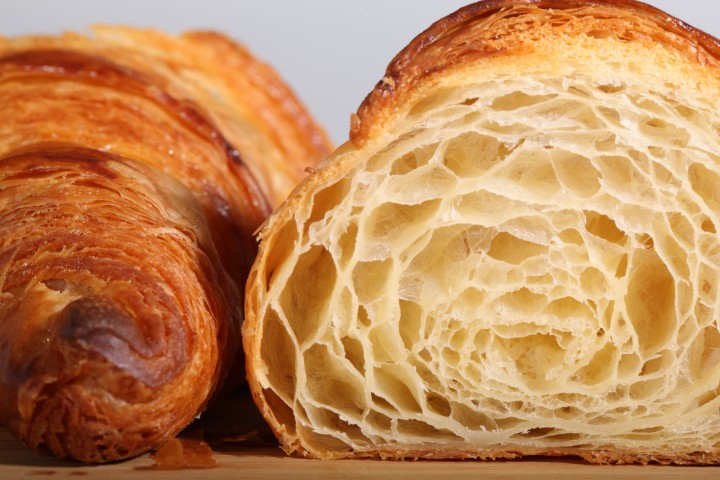
It’s all about the layers…
Klik hier voor Nederlandse versie
With this recipe we want to give you the exact directions on how we go about making classic French croissants. The recipe is an adaptation from the recipe for Classic Croissants by Jeffrey Hamelman. We started out largely following the instructions for his recipe, changed everything to our beloved metric system and found out some worthwhile croissant knowledge of our own along the way. Hopefully enough to justify sharing it all with you and inspiring you to give croissant baking a shot yourself.
Before you start we can recommend watching our croissant making video to get a general feel for the recipe. You can also check out our croissant making log where we keep track of our own croissant baking adventures. For answers to your croissant questions you can check out the Frequently Asked Croissant Questions section.
This recipe will yield about 15 good croissants plus some leftover bits which you can use to make a few, slightly odd shaped ones, or other inventive croissant-like creations.
If at first you don’t succeed, maybe you can take comfort from the fact that our first efforts were not very ‘croissant worthy’. But as you can see we persevered and got better…But we have to admit it is and always will be a tricky process. You have to work precise and be focused to get good results. So away with screaming children, hyperactive animals and all other things distracting! Put on some appropriate croissant making music and lets get to it…
Please read the following tips;
According to Raymond Calvel croissants laminated with margarine are formed into the crescent shape, while croissants laminated with butter are left in the straight form. We say, use whichever shape you like best, but do use butter!
The croissant recipe

Ingredients for the croissant dough
500 g French Type 55 flour or unbleached all-purpose flour / plain flour (extra for dusting)
140 g water
140 g whole milk (you can take it straight from the fridge)
55 g sugar
40 g soft unsalted butter
11 g instant yeast
12 g salt
Other ingredients
makes 15
280 g cold unsalted butter for laminating
1 egg + 1 tsp water for the egg wash
Day 1
Making the croissant dough
We usually do this part in the evening. Combine the dough ingredients and knead for 3 minutes, at low to medium speed, until the dough comes together and you’ve reached the stage of low to moderate gluten development. You do not want too much gluten development because you will struggle with the dough fighting back during laminating. Shape the dough like a disc, not a ball, before you refrigerate it, so it will be easier to roll it into a square shape the following day. Place the disc on a plate, cover with clingfilm and leave in the fridge overnight.
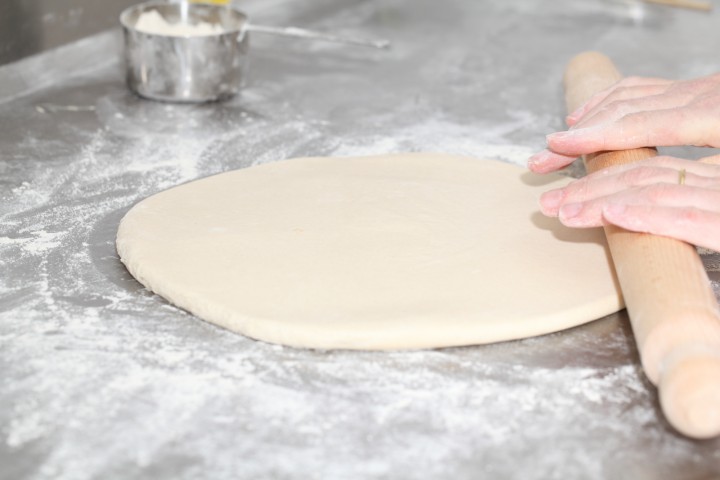
Day 2
Laminating the dough
Cut the cold butter (directly from the fridge) lengthwise into 1,25 cm thick slabs. Arrange the pieces of butter on waxed paper to form a square of about 15 cm x 15 cm. Cover the butter with another layer of waxed paper and with a rolling pin pound butter until it’s about 19 cm x 19 cm. Trim / straighten the edges of the butter and put the trimmings on top of the square. Now pound lightly until you have a final square of 17 cm x 17 cm. Wrap in paper and refrigerate the butter slab until needed.
Take the dough out of the fridge. With a rolling pin roll out the dough disc into a 26 cm x 26 cm square. Try to get the square as perfect as possible and with an even thickness. Get the slab of butter from the fridge. Place the dough square so one of the sides of the square is facing you and place the butter slab on it with a 45 degree angle to the dough so a point of the butter square is facing you. Fold a flap of dough over the butter, so the point of the dough reaches the center of the butter. Do the same with the three other flaps. The edges of the dough flaps should slightly overlap to fully enclose the butter. With the palm of your hand lightly press the edges to seal the seams.
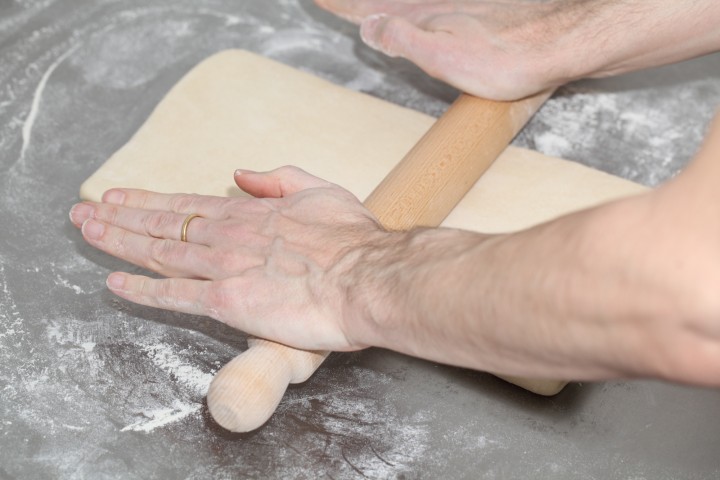
Now the dough with the sealed in butter needs to be rolled out. With a lightly floured rolling pin start rolling out, on a lightly flour dusted surface, the dough to a rectangle of 20 x 60 cm. Start rolling from the center of the dough towards the edges, and not from one side of the dough all the way to the other side. This technique helps you to keep the dough at an even thickness. You can also rotate your dough 180 degrees to keep it more even, because you tend to use more pressure when rolling away from you than towards yourself. You can use these techniques during all the rolling steps of this recipe. Aim at lengthening the dough instead of making it wider and try to keep all edges as straight as possible.
Fold the dough letter style, cover with clingfilm and refrigerate for 30 minutes (fold one third of the dough on top of itself and then fold the other side over it). Repeat the rolling and folding two more times (ending up with 27 layers of butter in total), each time rolling until the dough is about 20 cm x 60 cm. After each fold you should turn the dough 90 degrees before rolling again. The open ‘end’ of the dough should be towards you every time when rolling out the dough (you can see this in our croissant making video at around 3:40 minutes). After the second turn, again give it a 30 minute rest in the fridge. After the third turn you leave the dough in the fridge overnight until day 3, the actual croissant making day!
- Roll out to 20 cm x 60 cm
- Fold
- Refrigerate 30 minutes
- Rotate 90 degrees
- Roll out to 20 cm x 60 cm
- Fold
- Refrigerate 30 minutes
- Rotate 90 degrees
- Roll out to 20 cm x 60 cm
- Fold
- Refrigerate until day 3
- Rotate 90 degrees
- Roll out to 20 cm x 110 cm
Also see complete time table at bottom of page
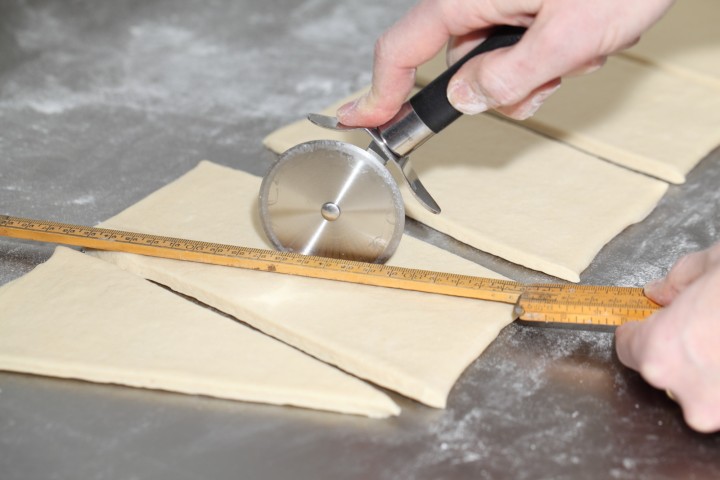
Day 3
Dividing the dough
Take the dough from the fridge. Lightly flour your work surface. Now very gently roll the dough into a long and narrow strip of 20 cm x 110 cm. If the dough starts to resist too much or shrink back during this process you can fold it in thirds and give it a rest in the fridge for 10 to 20 minutes before continuing. Do not fight the dough, when the dough refuses to get any longer, rest it in the fridge! It is such a shame to ruin two days of work.
When your dough has reached its intended shape, carefully lift it a few centimeters to allow it to naturally shrink back from both sides. This way it will not shrink when you cut it. Your strip of dough should be long enough to allow you to trim the ends to make them straight and still be left with a length of about 100 cm.
Shaping the croissants
For the next stage you will need a tape measure and a pizza wheel. Lay a tape measure along the top of the dough. With the wheel you mark the top of the dough at 12,5 cm intervals along the length (7 marks total). Now lay the tape measure along the bottom of the dough and make a mark at 6,25 cm. Then continue to make marks at 12,5 cm intervals from this point (8 marks total). So the bottom and the top marks do not align with each other and form the basis for your triangles.
Now make diagonal cuts starting from the top corner cutting down to the first bottom mark. Make diagonal cuts along the entire length of the dough. Then change the angle and make cuts from the other top corner to the bottom mark to create triangles. Again repeat this along the length of the dough. This way you will end up with 15 triangles and a few end pieces of dough.
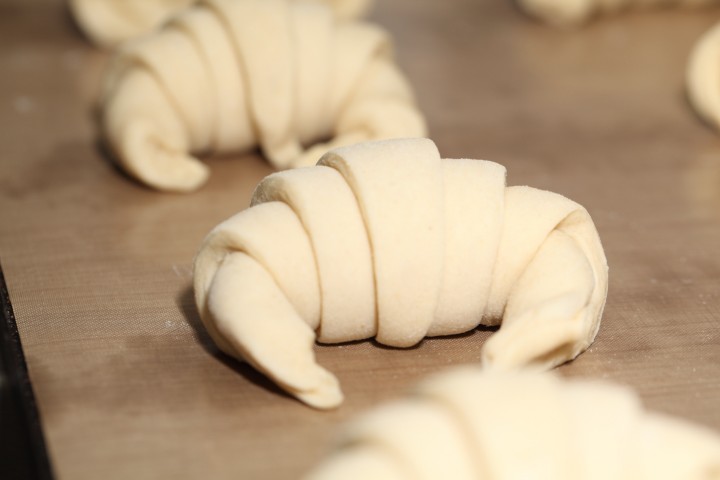
Using your pizza wheel, make 1.5 cm long notches in the center of the short side of each dough triangle.
Now very gently elongate each triangle to about 25 cm. This is often done by hand, but we have found that elongating with a rolling pin, very carefully, almost without putting pressure on the dough triangle, works better for us. You can try both methods and see what you think gives the best result.
After you cut a notch in the middle of the short end of the triangle, try and roll the two wings by moving your hands outwards from the center, creating the desired shape with a thinner, longer point. Also try and roll the dough very tightly at the beginning and put enough pressure on the dough to make the layers stick together (but not so much as to damage the layers of course).
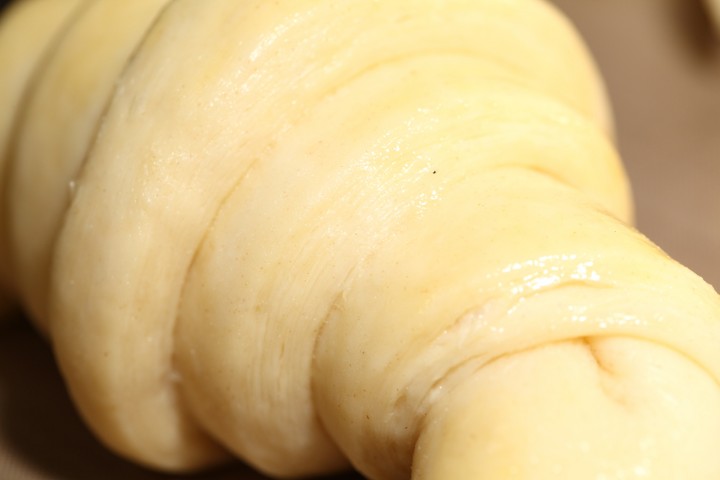
Proofing and baking
Arrange the shaped croissants on baking sheets, making sure to keep enough space between them so they will not touch when proofing and baking. Combine the egg with a teaspoon of water and whisk until smooth. Give the croissants their first thin coating of egg wash. You do not need to cover the croissants with anything, the egg wash will prevent the dough from drying out.
Proof the croissants draft-free at an ideal temperature of 24ºC to 26.5ºC / 76ºF to 79ºF (above that temperature there is a big chance butter will leak out!). We use our small Rofco B20 stone oven as a croissant proofing cabinet by preheating it for a minute to 25ºC / 77ºF. It retains this temperature for a long time because of the oven stones and isolation. The proofing should take about 2 hours. You should be able to tell if they are ready by carefully shaking the baking sheet and see if the croissants slightly wiggle. You should also be able to see the layers of dough when looking at your croissants from the side.
Preheat the oven at 200ºC / 390ºF convection or 220ºC / 430ºF conventional oven.
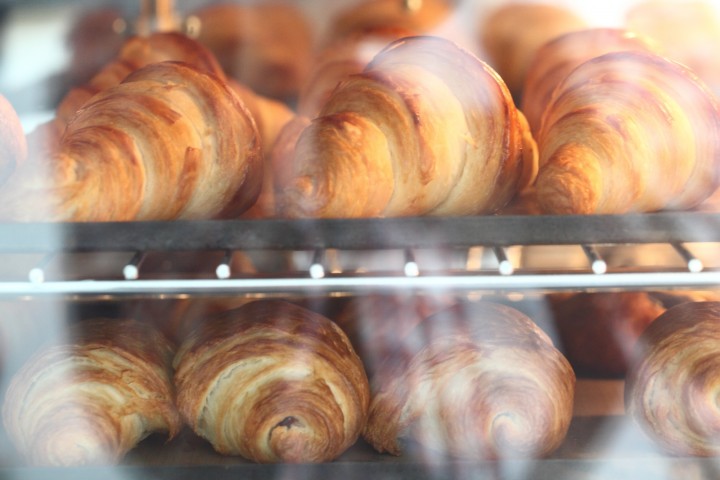
Right before baking, give the croissants their second thin coat of egg wash. We bake the croissants in our big convection oven for 6 minutes at 195ºC / 385ºF, then lowering the temperature to 165ºC / 330ºF, and bake them for another 9 minutes. Hamelman suggest baking the croissants for 18 to 20 minutes at 200ºC / 390ºF , turning your oven down a notch if you think the browning goes too quickly. But you really have to learn from experience and by baking several batches what the ideal time and temperature is for your own oven. Take out of the oven, leave for a few minutes on the baking sheet, then transfer to a cooling rack.
Latest way of baking; We heat up our double fan big convection oven at 200ºC, when heated up put the croissants in the oven and directly lower it to 175ºC. We bake them for 10 minutes at 175ºC, they will have a nice brown color by now, then lower the temperature to 150ºC, and bake them for another 6 minutes.
Best eaten while warm and fresh of course. Croissant we don’t eat or share within a day we freeze. We put them in the preheated oven (180ºC / 355ºF) for 8 minutes straight from the freezer. Nothing wrong with that, croissants eaten nice and warm, almost as good as the fresh ones…almost!
Croissant Time Table
Times are an indication and also depend on your experience with the recipe
Try to work swift but precise and take extra fridge time if needed!
Day 1 – Make initial dough
- 21.00 h – Knead for 3 minutes and store in fridge for 12 hours
Day 2 – Laminate the dough
- 09.00 h – Make butter slab and refrigerate till needed
- 09.05 h – Roll dough disc into square
- 09.10 h – Seal butter in dough
- 09.15 h – Roll out to 20 cm x 60 cm and fold
- Refrigerate 30 minutes
- 09.50 h – Rotate 90 degrees
- Roll out to 20 cm x 60 cm and fold
- Refrigerate 30 minutes
- 10.25 h – Rotate 90 degrees
- Roll out to 20 cm x 60 cm and fold
- 11.00 h – Refrigerate until day 3
Day 3 – Dividing, Shaping, proofing and baking
- 09.00 h – Roll out to 20 cm x 110 cm – part 1
- 09.05 h – Often needed! Take 20 min. fridge time if length not in one go
- 09.25 h – Roll out to 20 cm x 110 cm – part 2
- 09.30 h – Divide and shape the croissants
- 09.40 h – First coat of egg wash
- 09.45 h – Proof to perfection (indication 2 hours)
- 11.45 h – Second coat of egg wash
- 11.50 h – Bake for 15-18 minutes
- 12.10 h – Ready!



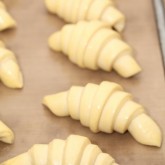




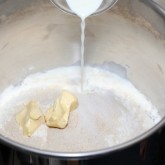
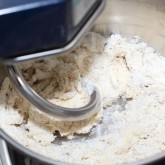
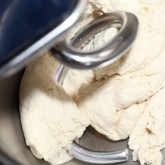
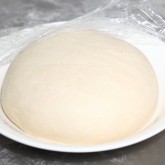

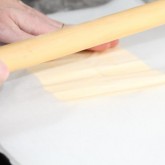

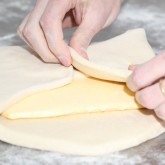
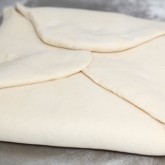



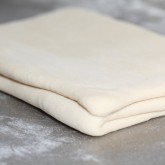
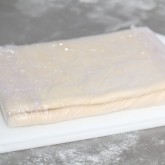

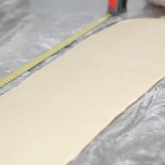
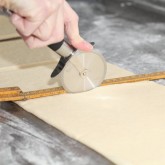













Andrew says
Hi Dan and Lenny,I think we have been developing the gluten in the flour too much.I am using Bakers hand flour from Costco.Next time I make these croissants I am going to just mix it by hand for 1 minute until everything is incorporated and the just let it rest in the fridge overnight,with the overnight autolyse,the dough should be good and hopefully easier to roll.Firm handshakes to you Dan for using European 84% butter,I would like to use it ,but at 7-9$ for 250grms im too cheap to spend that much money,when I can get it standard Canadian butter for 3$lb.From what I understand that the keeping it in the fridge is for the autolyse,it will also develop more flavor,and also to keep the yeast from activating,you want your dough to grow only in the last stage while proofing.I am using Lasaffre gold yeast,it is supposed to be better for high sugar doughs. Good luck
lennyk says
1 min is short
I have prob been doing 3 or more mins.
Will try 1 min and see.
Weekend Bakers says
Provided you can use the right flour, we would recommend going for 3 minutes.
Tali says
I’m very excited to try out this recipe but i had a couple questions i hope you can help me with. Firstly, can the croissants be shaped and frozen before baking rather than after? Secondly, I was considering trying to create that beautiful two toned dough and was wondering what you think would happen if I accomplished this by adding freeze dried strawberries instead of food color.
Thank you,
Tali
Weekend Bakers says
Hello Tali,
We can help you with the first question, the answer is yes and you can find our instructions for freezing at the bottom of this one day version of the recipe:
www.weekendbakery.com/posts…nt-recipe/
As for your second question, we would recommend making our recipe as described a few times before altering anything. Adding other ingredients will have an effect on the dough, but we cannot tell you what it would be using freeze dried fruit from our own experience.
Hope it will be great!
Tali says
I actually gave this recipe a try. Well…more like 3 tries. It was a fantastic experience and your recipe was so easy to follow. Thank you for all of the work you put it to make it available. If you want to look at what I managed to do, feel free to come visit.
exploratorykitchen.com/2019/…roissants/
Weekend Bakers says
Hello Tali,
Saw your results and you are really on a roll looking at all the variations and even the two toned versions we have never made ourselves. Really inspiring, thank you for sharing and enjoy your baking and other kitchen stuff!
Andrew says
What difference would you get if I do one book fold,and one letter for,I noticed by the time I get to the 3rd letter fold,my dough is like a rubber band,hard to roll out and starts tearing a bit.Here in Canada our AP flour is a standard 12.5 protein content,should I mix with another flour to make it lower? Thanks.
Dan says
Andrew, I’m in Canada as well and have tried this recipe 6 times and am having the same trouble — being able to roll out the dough thin enough for the last fold and then for the final roll before cutting. I’ve followed the recipe carefully and read the tips and comments. I am using the European style butter and corrected earlier mistakes of the butter and/or dough being too cold (my refrigerator is at 3 degrees Celsius). I called the flour maker (Robin Hood) and confirmed it is 12% so that shouldn’t be an issue based on advice from the website. I believe Red Roses brand is the same %. Any thoughts welcome.
Dan says
While I am at it…I don’t understand the relationship between lower temperature, gluten development and temperature of dough/butter to roll out…I have tried to relax the dough in the fridge when it gets difficult to roll, but I also find it more difficult to roll out if the dough is cold, so I’m unclear what to do. Thanks
Lenny says
I thought it was only me too, I have major troubles after first fold. Yet I see so many videos of persons rolling out so easily. I’ve tried the resting in the fridge for a variety of times 30,60mins etc to no avail.
Weekend Bakers says
Hello Andrew, Dan and Lenny,
The comment of Andrew above that he wrote today the 17th of November is something we think is indeed the matter. So we would also suggest to use a combination of flours to get to the right protein content or use a different flour that maybe develops less elasticity. Also see our post about gluten development: www.weekendbakery.com/posts…ut-gluten/
When the flour and butter are right, the rolling out will also get easier and with this the quality of the dough, because it does not get damaged.
Chef Rost says
I’ve been baking professionally since 1978 and this recipe rules! Thank you for sharing and I can’t wait to make them again.
Weekend Bakers says
Thank you so much Chef Rost, that means a lot coming from a professional baker with over 40 years of experience!
Wishing you all the best and wonderful pastry,
Ed & Marieke
Hany Hassan says
Hallo ,
Thanks a lot for your replay and for your great recipes
yea maybe you are right I used to open the oven door to check
However I have two more questions please:
1- should I use the Grill to give the croissant the golden color.
2- should I cover the shaped croissants while proofing with a cling film sheet or with a clean towel.
Thanks
Weekend Bakers says
Hello Hany,
Yes, with most ovens this gives an immediate and big drop in temperature!
Do not use the grill is our advice, but maybe try the convection setting if you have it available. Try and preheat your oven well, start a bit higher then when the croissants go in turn it to the required setting.
You do not cover the croissants, the egg wash protects them from drying out when proofing and this way they can expand well, a towel especially is not a good idea, much too heavy.
Hany Hassan says
Hallo,
Thanks a lot for your replay.
well I have a BOSCH free-standing gas cooker with a cooling fan oven, DOES IT CONSIDER A CONVECTION OVEN ?? I don’t know
if it so how would I use the convection setting in it ?
and the reason that made me use the grill is that I noticed that Croissants starts to have a golden color from the base but nothing on top
so any advice about it please ?
Thanks
Weekend Bakers says
Hello Hany,
We cannot help you well with your questions because we do not know your oven. We would suggest to read the manual of the oven and check what settings you have. We would not use the grill for croissants, because it is not the way to cook bread and pastry, the heat is too intense and direct with easy chance of burning. You can try and use the top tier closer to the heating elements if you use the conventional settings and see how that goes.
Good luck with it.
Hany Hassan says
Hallo Bakers,
Thanks a lot for your replay ,
however I am now trying your good recipe for the second time but in Both attempts I faced a same issue which is
During the 3rd roiling the dough is sticky and I feel that the butter is coming out of
I don’t know if it is normal or what
and I find the dough is resisting me when I get it out of the fridge would you please advice me
Thanks
Weekend Bakers says
Hello Hany,
Sorry to hear this. When sticky, use a bit of flour but not too much (or maybe you need to adjust the amount of liquid in the recipe for your flour just a bit). It is not good when butter comes out, so you are maybe pressing hard on the dough to roll it out, but you need to be gentle. Dough resisting too much will also make you press too hard, so leave it to relax for 5 minutes and then try again. Make sure you use the right flour too, with the right protein content of around 11%. Try a different flour next time if possible, to see if it makes a difference.
Good luck!
Andrew says
If I only have fresh yeast how much should I put?
Weekend Bakers says
Hello Andrew,
When converting from instant dry to fresh yeast you multiply by 3, but with fresh yeast it could be that it is just a little bit more enthusiastic than dry yeast. That is at least our experience. So officially it is 33 grams for this recipe, but we would use about 25 grams.
Good luck with it and hope the result will be great!
Susan says
Greetings from New Zealand ! This is the 2nd time I am following your great recipe for croissants. After encasing the square of butter in the folded dough, when you do the first roll out, is the butter supposed to also roll out so it is inside the entire length of the dough? My butter was very cold after being in the fridge overnight so did not spread evenly. I cannot recall what happened last time. The dough is resting at present so I don’t know what the results will be. Thank you.
Weekend Bakers says
Hi Susan,
Yes that is correct the butter needs to be evenly distributed. If the dough / butter is too cold, give it 5 to 10 minutes and try again, do not use force or press hard on the dough. The butter needs to be just right for rolling, so it needs to be pliable but not at a point where it might get liquid of course.
Very important like we state at the beginning of the recipe!: We use an organic butter with a low water content. A higher water content tends to make butter hard, which promotes tearing and breaking and ruins the layers. The butter we use has written on the package ‘at least 82%’ butterfat’.
Best of luck with it and we are sure it will get better with every attempt!
Hany Hassan says
Hi, I tried the recipe and I followed the instructions as you say. but I had two problems one is the butter is came out from the croissant and make a pond of butter
and the second is I didn’t get that crispy layer on the croissant top
Thanks
Weekend Bakers says
Hello Hany,
Many people have the same problems. We have answered these questions here for you: www.weekendbakery.com/posts…questions/
Also make sure your oven temperature is the true temperature and do not open your oven during baking. See our tips: www.weekendbakery.com/posts…your-oven/
Peggy says
Hi, if I am trying the recipe for a smaller batch (300g flour rather than sugar 500g), what size should I roll out the butter block and pastry for the lamination? And what should be the final size before shaping?
Thanks,
Peggy
Peggy says
Sorry – I meant to say that if I would like to use 300g of flour instead of 500g to make a smaller batch – what size should the initial butter and the dough be? And what should be the size for each lamination? And the final sheet for cutting?
Thanks,
Peggy
Weekend Bakers says
It is best to make halve a batch for which we can give you the following:
If you halve the recipe, the dough square should be 18.4 x 18.4 cm and the butter slab 12 x 12 cm. The same for the laminated dough, you must shorten only one side (otherwise you get a quarter of the original), so you end up with a 20 x 30 rectangle. The size of the final dough, right before cutting, should be 20 x 55 cm.
Peggy says
Thank you so much!
Vittoria Danino-Appleton says
I was nearly happy with my latest batch of croissants but they were a bit flat and although I could see a honeycomb texture all the way through they were a bit dense in the middle. I’m wondering if they were a bit underproofed – what do you think? (They taste good anyway!)
Weekend Bakers says
Hello Vittoria,
Sounds already near perfect. Yes we think your assessment could very well be right. The challenge for the perfect honeycomb is to take the proofing to the limit and bake at the exact right time and at the right temp. This will be slightly different for every baker, depending on the proofing conditions and oven workings mainly.
Hope you will bake your next batch soon.
Enjoy your fresh croissants!
Khim says
Hi
After shaping can I freeze the dough n whenever I want to eat than proof n bake
Weekend Bakers says
Yes you can Khim, our methods for this are described with our one day version of the recipe. You can find it here: www.weekendbakery.com/posts…nt-recipe/
Hailey says
How big is the final result of the croissants in cm?
Weekend Bakers says
Hello Hailey,
Depending on how well you can stick to the measurements and instructions each of the 15 croissants will be around 12 to 14 cm.
Chris says
I’m wondering, for making the dough, instead of letting it sit i the fridge for 12 hrs or 11 hrs, I let it sit for 24 hrs instead. What would happen?
Weekend Bakers says
Hello Chris,
We would not advice this to begin with. It also depends on your fridge how fast the dough develops, but we would stay closer to the 12 hours to limit the gluten development and rising of the dough.
If you want tips on retarding and freezing to better fit your schedule, you could take a look here: www.weekendbakery.com/posts…nt-recipe/
Thienpont c says
Heb dit recept gevolgd met roomboter van 100%
Dus zogoed als geen vocht, iets duurder dan boter 80% maar zijn geld dubbel waard .werkt ook gemakkelijker.
Dit zijn de beste croissants die wij al gebakken en gegeten hebben.
Dankjewel voor de goede recepten
Weekend Bakers says
Hallo Thienpont c,
Dankjewel, dat klinkt fantastisch! We zijn intrigeert door de 100% roomboter. Kun je daar nog wat meer over zeggen? Was deze zelf gemaakt of….?
Thienpont c says
Deze roomboter 100 % is verkrijgbaar bij Delhaize in België (nicolas Falise /Champs D’aubel )blauwe verpakking
Grt
zaven kouyoumdjian says
how many carbohidrets in a cerwasan
Weekend Bakers says
Based on a croissant being about 80 to 85 grams the carbohydrates would be between 35 and 40 grams we ‘guestimate’.
Farheen says
This is the most perfect recipe of all the 4 recipes I have been making including the one from my school ICC.
Made this for Marcus Samuelson at Red Rooster and he was full of praise.
Weekend Bakers says
Thank you Farheen, that’s wonderful to read!
Enjoy your pastry baking and maybe get some more inspiration from our other recipes with this same dough:
www.weekendbakery.com/posts…x-raisins/
www.weekendbakery.com/posts…y-caramel/
Hanh says
Could you give the recipes in U.S. measurements?
Weekend Bakers says
We always want to stress very much recommend weighing your ingredients for this recipe. Professional bakers use scales (also in the US) and in Europe home bakers do too. A scale will give you the exact same weight every time. Which is absolutely needed if you consistently want to make good bread and especially good pastry. You can get a scale for the same price as a few sacks of good flour and less than a lot of baking tools you already own, so if possible, go and get one!
If you need to use measurement you can find them with this recipe:
www.finecooking.com/recip…croissants
Chris says
Hi,
So i’ve tried this recipe a few times with a few different butters (all over 80% butterfat, most around 82), however consistently have issues with the butter layer segregating and not laminating properly. I think this is why I seem to get definite layers but not nearly as much lift as expected. I’ve been wondering if this is because the butter is too cold relative to the dough, or if my dough is perhaps not stiff enough and needs either less hydration or more butter. What are your thoughts? What temperature are your fridges set to? I would be loathe to change the dough recipe as it always tastes brilliant and I’ve run out of different butters to experiment with so I’m hoping it’s just a temperature issue.
Cheers!
Weekend Bakers says
Hello Chris,
This is very hard for us to answer Chris. Have you tried other flours too?
Or fridge temp is always around 5 C.
Chris says
Hi,
Thanks for responding. I haven’t tried different flours (I’ve been using type 55), would you recommend going for a flour with higher or lower protein content? I’ve also wondered if I need to add a little more yeast to help improve lift.
Thanks!
Weekend Bakers says
Hi Chris,
If it is close to 11% that’s a good indication and we would not go beyond 12, also depending on how the flour behaves, because they can all be different, even from batch to batch. The gluten content is one thing, but to make it more complicated, there are different types of gluten too. See: www.weekendbakery.com/posts…ut-gluten/
You can also experiment with yeast of course, but make sure your yeast is not close to or over its expiration date and if possible try fresh yeast, it can make a difference too in ‘enthusiasm’.
Enjoy your pastry baking!
Ivy says
my butter keeps melting during the second fold…
any ways to avoid it? I use 84% butter and my room temp around 22c
Weekend Bakers says
Hi Ivy,
It the first signs of too soft butter, immediately take the dough back to the fridge.
See our FACQ page for more details too:
www.weekendbakery.com/posts…questions/
You need to build up some more speed and this will come with practice so the butter does not get a chance to melt.
Jenny says
Thank you for such a great easy to follow recipe! I have made these almost every weekend now since I first tried them in January. Do you think I could incorporate shredded cheese into the dough when mixing? I would like to try making something with the cheese incorporated rather than rolling it up. Any advice is appreciated!
Weekend Bakers says
Hello Jenny,
That sounds marvelous! Great our recipe is a part of your weekly baking 🙂 To be honest, we would not add cheese to the dough, because we do not like the taste of ‘baked cheese’ and would rather have it melted on the inside, like with a nice toasty. We cannot remember seeing a recipe that uses your suggestion (which does not mean it doesn’t exist of course!), but you could give it a try, maybe with part of the dough and who knows it will be exactly what you are looking for! Also, when using cheese in the dough, we would advice to add less salt, so the overall result will not be too salty.
Enjoy your pastry baking and experimenting,
Marieke & Ed
Darren says
Hello!I followed your recipe and it was a big success’ thank you very much! I am also wandering, that I can only bake in winters given my skills, can I make the dough, cut into triangles and freeze them so I can enjoy them in summer when it’s impossible for me to laminate? Does it matter that I freeze the flat pastry or roll then to croissant-shape then freeze? Thanks Darren
Weekend Bakers says
Hello Darren,
Thank you very much for your kind comment. Unfortunately there is a limit to how long you can store dough in the freezer. So you would be able to do as you suggested, but we would always recommend to use it within weeks rather than months. But at least it will be possible for you to try some things out during the changing of the seasons.
We also share our method of freezing and retarding croissants at the bottom of this one day version of the croissant recipe: www.weekendbakery.com/posts…nt-recipe/
Hope this might be helpful!
Ed & Marieke
Amna says
Hi
I tried this recipe three times but the layers in second fold getting broke so what should i do? Also I’m facing problem in finding the flour, i found in grocery store only flour with 13% protein and 11.8 which is the best?
Regards
Weekend Bakers says
Hello Amna,
What do you mean exactly with the layers getting broke? Is it the butter that breaks into pieces? make sure to use the right butter with enough fat like we say in the recipe. The flour that we would advice to try first would be the 11.8% protein one.
Lenny says
Hello, I find after the second fold the dough becomes spongy and butter bursts out.
Any suggestions?
Weekend Bakers says
Hello Lenny,
It seems to us that your dough might benefit from extra fridge time to avoid this and also try to be gentle with the dough, not pressing too hard. If you take up too much time while laminating, everything starts to warm up and butter will burst out more easily. So before this happens let your dough relax in the fridge for 15 o 20 minutes and then continue.
Aleena says
Hi, Thank you so much for your recipe and blog. I am currently in the process of making you croissants. I was wondering if it is ok to leave the dough that has been laminated with the butter and completed the first fold in the fridge for more than 30 minutes? If I leave it in the fridge for 7 hours would it change the taste, flakiness or layers of the croissant? I was also wondering, how do I proof the croissants if the lowest temperature my oven can be set is 75 degrees Celsius, fan-forced?
Thanks!
Weekend Bakers says
Hello Aleena,
We would always recommend sticking to the recipe, especially the first few tries. And yes, it will make a difference of course in the end result if you change a recipe.
If you do not have time for the recipe, choose another day / period so it can have your undivided attention. Alternatively use the tips that you can find at the bottom of our one day version recipe about the use of fridge and freezer for retarding and storing. www.weekendbakery.com/posts…nt-recipe/
When using your oven as a proofing cabinet with croissants, it is important you are able to measure the inside of the oven with a digital / infrared thermometer. The dough should never go above 26 C to avoid butter leakage. So you can warm up your oven for a minute or so to get to a certain temp, then turn it off and check and if safely at or slightly under the desired temperature, you can put the croissants in.
Hope it will all work out well!
Mary says
Hi
Thank you so much for your recipe and blog.
I’ve made many batches and your recipe and technique definitely works for me.
My question is- why my croissants are flatter when they’re baked. They are properly proofed and are jiggly and full when I bake them at 200degC. They are nice and high until around 10 mins. Then they lose the nice height.
Could it be that I open the oven to turn the baking sheet 180 degrees for even browning?
There is minimum butter leakage and the croissants are light but not as light as they can be. I am aiming for the beautiful honeycomb crumb structure.
Proofing time 2.5 hours at 24-26 degC
Dough rested overnight prior to lamination. Kitchen temperature 18 DegC and marble kitchen bench. Butter used 83.1% fat
This photo below shows the proofed croissants prior to baking:
share.icloud.com/photo…rnsby,_NSW
share.icloud.com/photo…rnsby,_NSW
This photo shows how they flattened after baking.
I hope you can give me your opinion and help.
Thanks!
Weekend Bakers says
Hello Mary,
Thank you for your comment. Yes your croissants look wonderful prior to baking and still quite OK after, but they are a little flat. So we do have some suggestions:
First is to indeed not open the oven door during the baking process although we know you do this for even browning but opening the door too soon with the structure not yet stable could lead to a bit of deflation possibly. Or you could try a different (brand of) flour, which could make a difference and could lead to a less heavy result if your current flour has a higher percentage of fibre that weighs the dough down. And our last tip is to add some vitamin C to your flour for extra strength. Due to the properties of vitamin C, it can be used as a dough (gluten) strengthener during fermentation, helping to improve the structure of the dough. You can buy vitamin C 1000mg tablets and in general use one third of one tablet in a dough with 500 grams of flour. You grind the piece of tablet to a powder and add it to the flour.
Lots of success with the pastry baking, hope you will get your honeycomb!
Ash says
Where can you get the correct flours in Australia? I don’t know if you live here, so you may not be able to help- I have pastry/cake flour that I use for brioche and plain White Wings flour, should I use one of those or buy some new flour online?
Sorry if this doesn’t really make sense, but I hope you can help.
Mary says
Hi
I use the bread flour available from woolies. It’s in a 5kg bag
Weekend Bakers says
Hi Ash, we live in Holland, in Europe and do not know about flour in Australia, but look at the bag you have and look up the percentage of protein. It should ideally be around 11%, it could be your pastry flour has a % lower than that. If so it could be a good idea to use a combination of your pastry flour and the bread flour Mary is kindly mentioning.
Good luck with it and enjoy your baking!
Elisabeth says
I do not have a large convection oven, but I do have a Rofco B40. Can croissants be successfully baked in the Rofco?
Weekend Bakers says
Hi Elisabeth,
For our pastry and croissants, cookies and cakes we use a professional convection oven and get great results with that. We also made croissants in a normal household oven, also with good result.
So although we know it is possible to bake other things next to bread in the Rofco, we, due to lack of experience with it also, cannot truly comment on the results of other baked goods. We consider it first and foremost a bread oven and for small batches we would sooner advice you to use a household oven with fan option.
We do know of a small baker who made croissants in the Rofco in the past and got quite good at it, but was constantly playing with the settings / temp to get it right. Later he told us he was happy to be able to use a deck oven for his pastry, because the process in the Rofco was so laborious. But we cannot tell you what he did exactly.
Hope this helps somehow…
Jesse says
I am having a problem that I hope you could help with. I am on my third attempt at making croissants, the last 2 had very bread like crumbs and I realized it was from rolling it out too hard. Now on my 3rd attempt I am trying very hard not to add too much pressure, but my dough will not comply. It seems to bee very stiff and will always spring back after rolling it. I have given it many rests in the fridge (about 20 minutes to an hour) to let the gluten relax but when I take it out and start rolling again it still is very elastic and springs back to its original shape. I can’t get it to the 20cmx60cm or even close. Any suggestions??
Weekend Bakers says
Hello Jesse,
What flour are you using? And how do you develop your dough (with a machine or by hand). We would suggest trying a different flour if possible and see how that goes. One way or another you need to get less elasticity in your dough. For background info also see our article about gluten quality and quantity: www.weekendbakery.com/posts…ut-gluten/ and the one about flour types: www.weekendbakery.com/posts…our-types/
vince says
I have a few dozen croissants in my time but this by far the best recipe and method. Be patient and do it this way well worth the wait./
Weekend Bakers says
Thank you so much Vince! Enjoy your pastry baking 🙂
Gaspar says
Hello,
I made croiassants two times, and i always run into the same problem.When they come out of the oven the outside is brown and flaky but the inside is almost raw.I bake them after your instructions.do you have ani idea or advice that could help?I would appriciate your help.
Thank you!
Have a good day.
Weekend Bakers says
What oven and what settings are you using Gaspar?
Scott says
Hello—one of my most common problems when laminating dough is when rolling it out I will get small tears on top of the dough—seemingly exposing the layer below. Is this a common occurrence? Does it negatively affect the lamination? And any tips to avoid this?
Weekend Bakers says
Hello Scott,
Yes, it will have a negative effect on the end result. Could it be your dough is too dry or are you putting too much pressure on the dough when rolling? Also make sure your butter is evenly distributed, so no lumps and bumps or cracked up islands of butter. Also gently elongate the dough and at signs of resistance, cover the dough and let the gluten relax for 10 to 20 minutes in the fridge before continuing. Also use the right type of flour and butter with high fat content.
You can read more about it in our FACQ section:
www.weekendbakery.com/posts…questions/
April says
I made the dough yesterday evening but now I don’t have time for laminating . The dough has risen enough, can I just let the dough sit in the fridge until I can work with it or put it into the freezer to stop the rising? Is that ok to freeze fully proofed croissants so I can have a freshly baked one without waiting for it to rise?
Weekend Bakers says
Hi April,
It depends on how much longer it will be in the fridge. If it is hours, then you should be alright. If it is another day, then we would advice the freezer.
On your other question we can show and tell you exactly what we do when it comes to retarding and freezing at the bottom of our one day recipe version here:
www.weekendbakery.com/posts…nt-recipe/
Hope it will be wonderful. Enjoy your baking.
Dan says
Thank you for providing this recipe (and also all your responses to the comments/questions – very helpful!) – I’m on about my fifth attempt and am finally getting great croissants – got to keep working on the patience and not be afraid to put them back in the fridge to chill a little before rolling again….Thanks again!
Weekend Bakers says
Hello Dan,
Thank you for your comment. We can only say, you give the best advice to yourself 🙂
Hope it will be even greater and you will have the most wonderful croissants to eat and share.
Enjoy the pastry journey!
Ed & Marieke
Rodrigo says
“The key is to keep the butter solid between the layers of dough, this is what gives the croissant its flaky layers.”
I really never got this. The butter should be solid but after all the work you had to keep it solid, you’ll let it proofing in room temperature for 2 hours.
How come the butter in room temperature won’t spoil its flakiness when proofing but will do so in any other moment of the process??
Thank you for sharing
Weekend Bakers says
Hello Rodrigo,
Good question! While working with the butter, and doing so at room or warmer temperatures, it would never be able to get a good distribution and it would possibly leak out. So it should be at the exact right temperature where it is pliable and workable without spilling out or forming islands or pools.
At all stages of the process you can look at it this way: By rolling out you are effectively ‘kneading’ the dough and the butter needs to be cold to keep the layers in tact. At the final stage, the proofing, the dough gets warmer, but at this stage, you are not touching or working the dough anymore, so the butter stays in place. That is why you are not spoiling the flakiness, presuming you have carefully built up the layers at the right temperature (plus working evenly and precisely) in the previous stages.
Hope your croissants will be great!
Chef Veronus says
My dough get crack while rolling. When crossaint proofing they are shape less n crack
Why it’s so
Chef Veronus says
We add gluten n improve
Weekend Bakers says
Make sure you use flour with a (gluten) protein content of close to 11%, so adding more or too much gluten can have a negative effect.
Weekend Bakers says
Can you elaborate on your question? Does your butter crack or what do you mean by the dough cracking? Is it too dry?
You can also find many answers to your questions on this page:
www.weekendbakery.com/posts…questions/
Pedro says
Yesterday I baked the croissants I have started on Sunday, for 15 minutes at 200C. From the outside they looked amazing, but inside they didn’t have the same structure as yours, it looked like the top layers fell over the others, and all croissants ended up with a big hole inside, at the top, and a lot of layers piled up over each other at the bottom. I’m not sure how to explain that in other words other than that hehehe
Anyway, do you have any ideia what might have caused this? I wonder if the oven should be at higher temperatures, or maybe if this has something to do with the butter distribution over the dough.
Weekend Bakers says
Hello Pedro,
First it is good to check your ‘real’ oven temperature. You can read how this works here: www.weekendbakery.com/posts…your-oven/
This way you can also decide if you should adjust your oven settings for all your bakes. But we think your problems are indeed caused mainly by an uneven distribution of butter and uneven layers.
So try to work on this for next time. One thing that is sometimes done is to sprinkle some flour on the butter block, which would help with the layering (we have to point out we never do this, but maybe it could help you).
Mainly very important: Try to work on your layering by keeping the laminated dough cool, work fast and do not press on the dough when rolling it but gently elongate it.
Good luck with it and keep practicing!
April says
I made the dough yesterday evening but now I don’t have time for laminating . The dough has risen enough, can I just let the dough sit in the fridge until I can work with it or put it into the freezer to stop the rising? Is that ok to freeze fully proofed croissants so I can have a freshly baked one without waiting for it to rise?